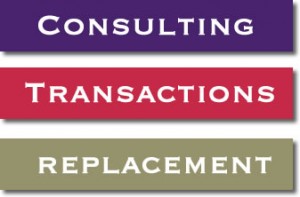 We start our client engagements with detailed discussions surrounding your overall exchange strategy. We have discovered over the years that many of our clients did not even know that Section 1031 existed in the US Tax Code, let alone how to use the code to meet their overall objectives. Quite often after the first phone call we have introduced concepts that had not been discussed with our clients from any of their advisors.
We start our client engagements with detailed discussions surrounding your overall exchange strategy. We have discovered over the years that many of our clients did not even know that Section 1031 existed in the US Tax Code, let alone how to use the code to meet their overall objectives. Quite often after the first phone call we have introduced concepts that had not been discussed with our clients from any of their advisors.
While the mechanics of doing an exchange can be very straight forward, there can be a lot to learn and a lot of moving pieces involved in executing a successful exchange.
Our Service Approach
Before we can solve your problem, we have to know what your problem is. An EWI advisor will take the time to first understand what you are trying to accomplish:
- Does your situation qualify for 1031 treatment?
- What is your overall capital gains situation?
- Do you understand the basic 1031 timelines and rules?
Depending upon you unique situation, the proper EWI professional will be assigned to you based on what you are trying to accomplish.
![]()
Many of our most successful client engagements have been accomplished when they are well planned and executed.
We sometimes work with clients for a year or more before an exchange occurs. During this process we help to set forth the exchange strategy that best achieves our client’s objectives. We work on a team with their other trusted advisors to ensure that the exchange strategy is well integrated to their overall planning.
Consulting is accomplished using a pre-determined project rate or an hourly rate whichever best suit our clients needs.
![]()
Our primary role as Qualified Intermediary is to ensure each and every transaction we facilitate is strictly compliant with the Section 1031 code. We interface with the professionals that are part of each and every transaction to make sure that the appropriate documentation is presented at closing, that the settlement / closing statement accurately reflect the exchange, and that all funds (incoming and outgoing) are handled in the appropropriate manner.
Our primary goal during the transaction phase is to achieve the exchange while remaining quite transparent to you and the rest of the members of your team.
Our exchanges are always accomplished using a flat rate schedule that varies slightly depending upon the complexity of your situation.
![]()
One of the most difficult aspects of an exchange, and the reason most exchanges fail is that clients are not well advised of their replacement property options. There is a strict 45-day time limit after you sell your property to formally identify replacements. This is tough.
Further, very few professionals actually understand the many way in which exchangors can put their proceeds to work for them after the exchange. We have heard comments ranging from “you have to purchase raw land if you sell raw land” to “if you want to achieve a monthly passive income you have to sell, pay the taxes and re-invest in something other than real estate”.
While it might seem elementary for some investment real estate owners, we have discovered that there are very few professionals that have done the groundwork to enable them to assist clients in achieving their exchange objectives by using alternate exchange methodologies.
EWI has spent many years in establishing relationships with those professionals that can assist exchangors meet a myriad of financial objectives using Section 1031 as the base of the strategy.
